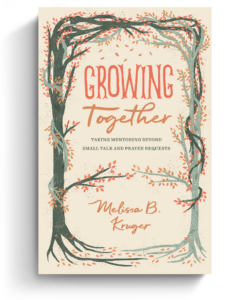“Small” isn’t a particularly attractive word in most instances. Who wants a small bank account, a small level of honor, or a job with a small salary in a small office? And even though we might romanticize some advantages of having a small church, I think few pastors in their honest moments would rather have their church be small than large and growing.
But “small” can be good and even revolutionary. Think of small ball as practiced during the 2013–14 season by the Kansas City Royals. The Royals used a small-ball strategy to show that a team can be very successful without a beefy budget or highly paid home-run sluggers. They employed a technique of small, methodical steps—base hits, bunts, stolen bases, sacrifice flies—to get runners on base and around to home. And it worked.
In his excellent book Small Teaching, James Lang applies the idea of small to help teachers become more effective at what they do. Lang, a professor, knows that most teachers want to develop their skills and become more engaging and effective, but doing so is difficult. Conferences, books, and seminars promise that a radical overhaul of education and pedagogy will solve all of our problems as teachers.
Lang rightly argues, however, that it isn’t possible for teachers and professors to change everything they do—to flip every classroom, to revamp an entire school, to jettison all they have been taught. Instead, it is far more wise, realistic, and effectual to make small steps—methodical little changes to how a teacher approaches teaching and learning. It’s a small-ball approach to improved pedagogy, and it works.
Bringing Small Ball to Preaching
Small ball. Small teaching. What about small preaching?
Let’s consider just one small step we can make to grow as preachers: thinking carefully about the last minute of a sermon.
“Better is the end of a thing than its beginning,” quips the somewhat cynical sage of Ecclesiastes (7:8). Homileticians and rhetoricians would agree—at least in part. Both the beginning of a sermon and its end are the most important parts in effect and memorability. We know that of the roughly 3,000 to 4,000 words in a 35-minute sermon, the average brain will only imbibe a small percentage in a lasting way. Vivid illustrations and personal stories have a good shot. What you say in the first and last minutes of your sermon have prime opportunity. Most of the rest of it will be forgotten. So paying attention to that last minute really matters.
Both the beginning of a sermon and its end are the most important parts in effect and memorability.
Different preachers will have varying philosophies and habits regarding how much they plan and write out what they are going to say in the sermon—from complete manuscripts to only jotted-down main points. That’s OK. But all preachers should be thoughtful, planned, and intentional with how they spend the precious currency of the last minute. In addition to not waiting until the last minute to think about your last minute, here are some last-minute don’ts and do’s for your message:
Don’t:
- Fail to land the plane. There are few worse ways to ruin an otherwise good sermon than by petering out—ending weakly, with no clarity, no finality. I’ve actually heard a preacher end with “Well, that’s all I’ve got to say.” A sermon is not a casual conversation. It is an intentionally crafted communicative experience. Don’t fly around with your sermon until you run out of gas and then crash. Land the plane with fuel in the tank and passenger safety in mind by knowing where you want to end. Then do it.
- Surprise your hearers that your message is over. They should receive verbal and non-verbal clues as you are coming to the end. Tell your hearers that you’re nearing the end by giving them a numbered list of how many application points there are or by using expressions like “Finally” or “So to wrap this all up.” (That is, as long as you really are close to ending. Don’t say these things with 10 minutes left. I’ve been guilty of this, as my wife and kids have pointed out.)
- Conclude your sermon with a prayer that isn’t really speaking to God but is instead reiterating your three points to the congregation. “Lord, help these people remember that (1) We should . . .” This is neither good prayer nor good preaching.
Do:
- Go for the heart in very specific applications. Don’t be content with general and abstract platitudes. I often spend the last five to seven minutes of a sermon applying my point to the real-life situations of teenagers, young marrieds, retired people, the apathetic, the joyful, the depressed, the broken, or those facing chronic pain.
- Write out your ending. As with the first minute of your message, the last minute is essential in overall effect, so don’t leave it to chance and laziness. Be intentional and write out what you are going to say, paying attention to the content, shape, and quality of your words.
Go for the heart in very specific applications. Don’t be content with general and abstract platitudes.
- End on a positive, inviting note. If you end with a negative word, the congregation will leave the sanctuary glad the sermon is over and leave it there, not in their hearts and minds, fleeing its discomfort.
- Tie the point of the whole message together. Your big idea—in content and application—should be the last thing they leave with. Over lunch they should be able to repeat the point of your sermon to each other. The last minute is the best place to implant that in their hearts and minds.
How does lasting change come about in diet or exercise or acquiring a new skill? How do I fix the slice on my golf drive? How do I lose those extra 10 pounds of winter belly weight? How do I improve as a preacher? Through taking small steps in the same direction over time.
Thoughtful, faithful, intentional small steps are the way toward growth and improvement. So come and start small.
This is excerpted from Jonathan Pennington’s new book, Small Preaching: 25 Little Things You Can Do Now to Become a Better Preacher (Lexham Press, 2021).
Involved in Women’s Ministry? Add This to Your Discipleship Tool Kit.
 We need one another. Yet we don’t always know how to develop deep relationships to help us grow in the Christian life. Younger believers benefit from the guidance and wisdom of more mature saints as their faith deepens. But too often, potential mentors lack clarity and training on how to engage in discipling those they can influence.
We need one another. Yet we don’t always know how to develop deep relationships to help us grow in the Christian life. Younger believers benefit from the guidance and wisdom of more mature saints as their faith deepens. But too often, potential mentors lack clarity and training on how to engage in discipling those they can influence.
Whether you’re longing to find a spiritual mentor or hoping to serve as a guide for someone else, we have a FREE resource to encourage and equip you. In Growing Together: Taking Mentoring Beyond Small Talk and Prayer Requests, Melissa Kruger, TGC’s vice president of discipleship programming, offers encouraging lessons to guide conversations that promote spiritual growth in both the mentee and mentor.

































